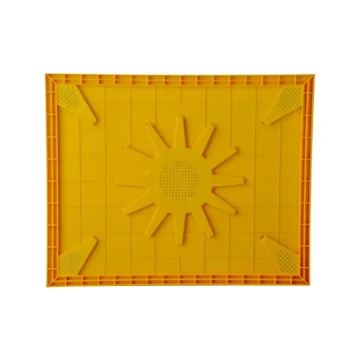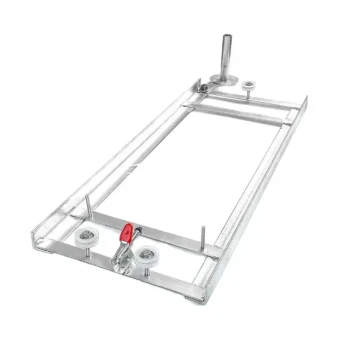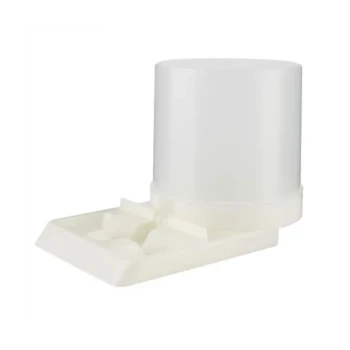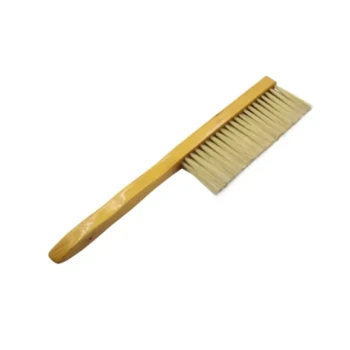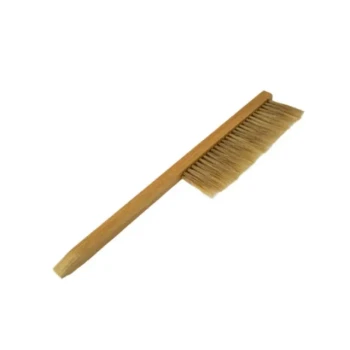In short, a screened bottom board is a dual-purpose tool. It assists with temperature control by providing critical ventilation to the hive, particularly in hot weather. For pest management, its primary function is to allow parasitic Varroa mites that fall off bees to drop completely out of the hive, preventing them from reattaching to another host.
The true value of a screened bottom board is not just in passively helping the hive, but in transforming the hive floor into an active diagnostic tool. It empowers the beekeeper to monitor pest levels and make informed, data-driven decisions about colony health.
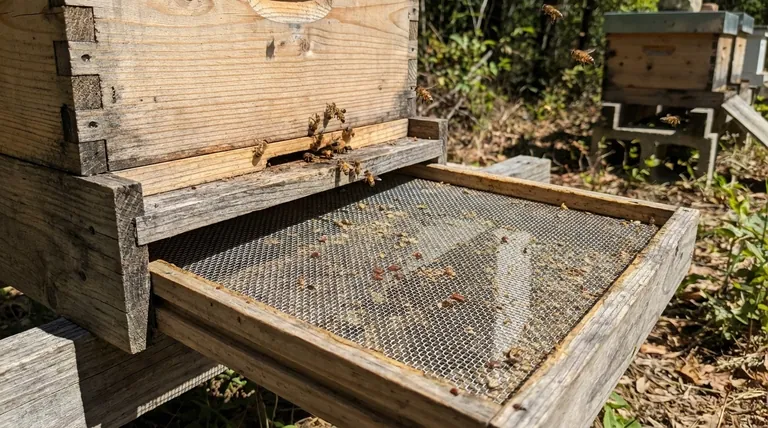
The Dual Role: Ventilation and Debris Removal
A screened bottom board replaces the traditional solid wood bottom of a beehive with a sturdy wire screen. This simple modification has two profound impacts on the colony's environment.
Enhancing Temperature and Moisture Control
The open screen provides a constant, gentle flow of air throughout the hive. This ventilation is especially beneficial in hot climates, as it helps the colony cool itself more efficiently and prevents the hive from overheating.
This airflow also helps reduce condensation buildup inside the hive, creating a less hospitable environment for mold and mildew.
A Physical Defense Against Varroa Mites
Varroa mites are one of the most significant threats to honey bee colonies. During their life cycle, mites will occasionally lose their grip and fall from their host bee.
With a solid bottom board, the mite can simply wait and climb back onto the next passing bee. A screened bottom board breaks this cycle by allowing the fallen mite to drop completely through the screen and out of the hive.
From Pest Control to Pest Management
While passively dropping mites is a benefit, the true power of a screened bottom board lies in its role as a tool for Integrated Pest Management (IPM). It allows you to monitor your hive's health without invasive inspections.
The Power of the Debris Board
Most screened bottom boards come with a removable solid insert, often called a debris board or sticky board. This board can be slid into a slot beneath the screen.
When coated with a light layer of oil or petroleum jelly, this board becomes a sticky trap that catches everything that falls through the screen, including Varroa mites.
Conducting an Accurate Mite Count
By leaving the sticky board in place for a set period (typically 24-72 hours), you can perform a mite count. After removing the board, you can count the number of Varroa mites that have fallen and become trapped.
This count provides a reliable sample of the mite population within the hive. Dividing the number of mites by the number of days the board was in place gives you a "24-hour mite drop" number.
Making Data-Driven Treatment Decisions
The mite count is not just a number; it is actionable data. Beekeepers use established thresholds to determine if the mite infestation level requires intervention.
This data-driven approach allows you to treat your colonies only when necessary, reducing the use of chemical treatments and preventing the development of resistant mite populations.
Understanding the Trade-offs
While highly beneficial, a screened bottom board is not without its considerations. Its effectiveness depends on your climate and management style.
The Challenge of Colder Climates
The same ventilation that is a benefit in summer can become a liability in winter. An open screen can create a draft and make it harder for the bees to maintain their crucial winter cluster temperature.
For this reason, it is standard practice to slide the solid debris board into place during the colder months to seal the bottom of the hive and conserve heat.
Impact on Queen Pheromones
An open screen can allow the queen's vital pheromones to dissipate more quickly. This is rarely an issue for an established colony.
However, when installing a new package of bees or introducing a new queen, it's often recommended to keep the debris board in place for the first week to help concentrate the pheromones and promote colony cohesion.
How to Apply This to Your Hive
Using a screened bottom board effectively means adapting its configuration to the season and your specific management goals.
- If your primary focus is proactive pest management: Regularly use the sticky board to perform 24-hour mite counts and track infestation levels over time.
- If your primary focus is hive health in hot climates: Keep the screen open (debris board removed) throughout the summer to provide maximum ventilation and reduce heat stress.
- If your primary focus is beekeeping in cold climates: Use the open screen during the warm season but ensure you insert the debris board to close the bottom before the first frost.
Ultimately, a screened bottom board transforms your hive base from a simple floor into an essential diagnostic tool for modern beekeeping.
Summary Table:
| Function | Key Benefit | Key Consideration |
|---|---|---|
| Temperature Control | Provides ventilation to prevent overheating in summer. | Can create drafts in winter; requires a solid insert for cold weather. |
| Pest Management | Allows Varroa mites to fall out of the hive, breaking their life cycle. | Enables data-driven mite counts via a sticky board for precise treatment decisions. |
| Colony Health | Reduces moisture and mold. | Queen pheromones may dissipate faster; a solid insert is recommended for new colonies. |
Ready to equip your apiary with professional-grade tools for superior hive health?
As HONESTBEE, we supply commercial apiaries and beekeeping equipment distributors with the durable, effective supplies needed for modern, data-driven beekeeping. A screened bottom board is just one component of a successful hive management system.
Contact our wholesale team today to discuss how our equipment can help you monitor colony health, manage pests proactively, and improve your operational efficiency.
Visual Guide
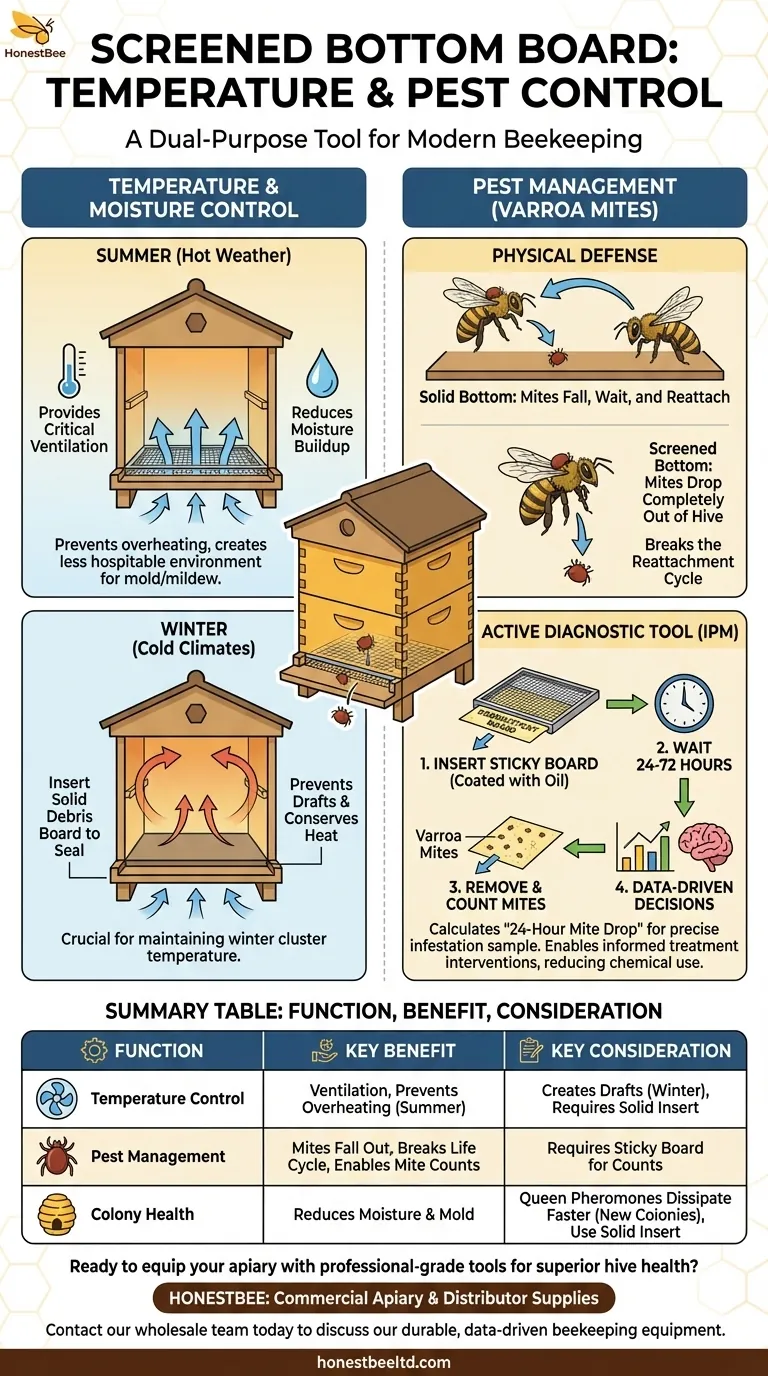
Related Products
- Langstroth Screen Bottom Board for Beekeeping Wholesale
- Australian Pine Wood Langstroth Screen Bottom Board for Wholesale
- HONESTBEE Wooden Bee Escape Board with Triangle Mesh Design for Beekeeping
- Boardman Entrance Bee Feeder Durable Galvanized Steel and Wood Construction for Beekeeping
- Professional Galvanized Hive Strap with Secure Locking Buckle for Beekeeping
People Also Ask
- What are the benefits of using a screened bottom board for beehives? Improve Ventilation & Mite Control
- What are the advantages of a screened bottom board? Boost Hive Health with Superior Ventilation & Pest Control
- How should the screened bottom board be used throughout the year? A Guide for Healthy Hives
- What is the primary function of a screened bottom board in a hive? Enhance Ventilation & Control Varroa Mites
- What are the benefits of a screened bottom board? Boost Hive Health & Control Varroa Mites





